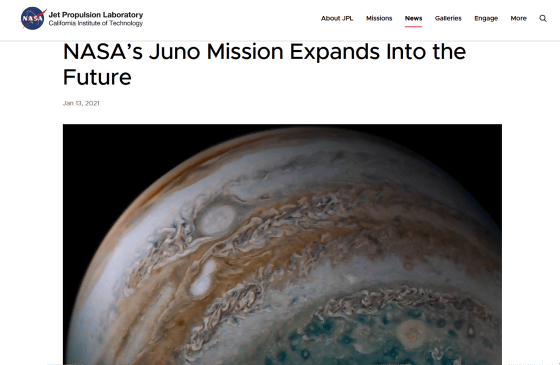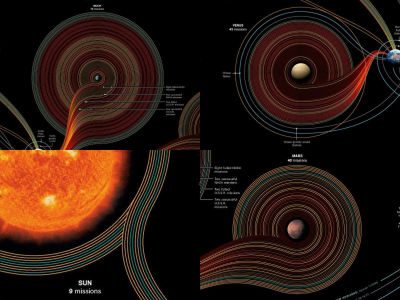Can a spacecraft pass through a planet made of gas like Jupiter?

by
Jupiter , the largest planet in the solar system, is a giant gas planet (Jupiter-type planet ) whose main component is gas, and does not have a hard surface like the Earth. Associate Professor Lee Fletcher , a planetary scientist at the University of Leicester, England, answers the question, 'If Jupiter is made of gas, can a spacecraft pass through it?'
Could a spaceship fly through a gas giant like Jupiter? | Live Science
https://www.livescience.com/spaceship-fly-through-gas-giant.html
The planets of the solar system is mainly formed of a metal and rocks terrestrial planets and is constituted by ice and water containing methane and ammonia ice giant Jupiter configured, and a gas such as hydrogen or helium It is classified as a terrestrial planet. Since Jupiter-type planets such as Jupiter and Saturn are mainly composed of gas, some may have wondered, 'Isn't a spacecraft able to pass through the interior of Jupiter?'
There have already been multiple cases of spacecraft rushing into Jupiter-type planets. In 2003, the Jupiter probe Galileo and in 2017, the Saturn probe Cassini rushed into Jupiter and Saturn, respectively. I'm done. In addition, Juneau, a spacecraft that entered Jupiter's orbit in 2016, was scheduled to enter Jupiter on July 30, 2021 and end the mission, but NASA entered Jupiter in January 2021. It has been postponed and announced that it will operate until September 2025.
NASA's Juno Mission Expands Into the Future
https://www.jpl.nasa.gov/news/nasas-juno-mission-expands-into-the-future

Unfortunately, neither Galileo nor Cassini could pass through the interior of the planet and were destroyed by high temperatures and pressures along the way. However, neither Galileo nor Cassini intended to pass through the interior of the planet, so it could be said that it was not sufficient in terms of defense. Some may expect that in the future, a spacecraft with strong walls will reach deep into Jupiter and Saturn and pass through as it is.
However, according to Mr. Fletcher, it is impossible to pass through Jupiter and Saturn even if a dedicated spacecraft is built. Not only are gas giants covered in fluffy gas, but as they approach the center, their densities, pressures, and temperatures all rise to very high levels. Near the center of Jupiter, gaseous hydrogen is normally turned into a liquid metal at too high a pressure, and it seems that the spacecraft is not in a state where it can pass through.

Before thinking about the pressure in central Jupiter, let's first consider the
If you really want to get the spacecraft into the center of Jupiter, Fletcher argues that you need to shape the spacecraft into a bullet-like shape to improve aerodynamics and allow for a dive. As the spacecraft begins its descent, it passes through thin clouds of ammonia and a bluish sky due to light scattering, and eventually through reddish-brown clouds of ammonium hydrosulfide.
When it reaches a depth of about 50 km from the surface of Jupiter, which is defined by the standard of 'the surface where the atmospheric pressure becomes 1 bar (100 kilopascals)', it is necessary to pass through a layer of thick cumulonimbus clouds, and the spacecraft is severely thundered. It is said that it will be exposed to. Deeper, 7,000 to 14,000 kilometers from the surface, the spacecraft will collapse to the level of constituent atoms as the air pressure reaches 1 million bar and the temperature rises to tens of thousands of degrees, Fletcher explained. increase.
Unfortunately, the spacecraft disappears before it reaches the center of Jupiter, but the atoms of the spacecraft that have collapsed to the level of constituent atoms continue to remain as part of Jupiter. '(The constituent atoms of the spacecraft) will be part of the giant planet forever. What you add to the giant planet is not really lost,' Fletcher said.

Related Posts:
in Science, Posted by log1h_ik







